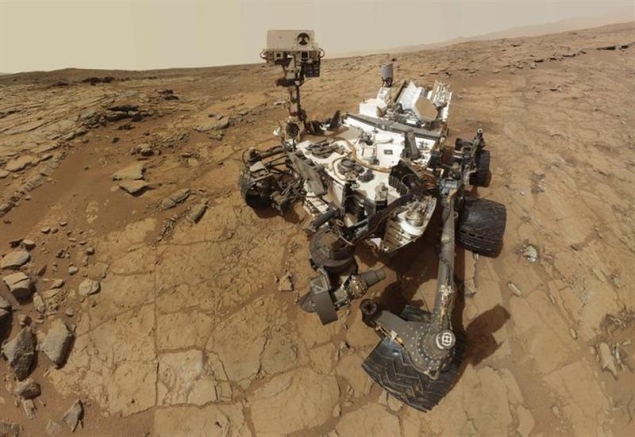
Samsung Electronics, which continues to vex Apple, now has another target, the BlackBerry.
Samsung's smartphones have been best sellers all over the world, but the company has been, until recently, marketing them to consumers, not businesses.
But over the last year, Samsung, the South Korean manufacturer, has been quietly beefing up the Google Android software that runs on its smartphones to give businesses a phone with more security.
It introduced that software, named Knox, as in the fort, at an international cellphone industry trade show here this week. Samsung said its new version of Android protected users from malware.
The company hopes that the new software makes Samsung smartphones attractive to corporate information technology departments that worry about the theft of sensitive corporate data by hackers. I.T. managers have been among BlackBerry's most loyal customers because of the security BlackBerry built into its phones and the private communications network it maintains.
Samsung said it teamed up with General Dynamics, a military contractor, to ensure its phones met the strict security standards of government agencies. Samsung executives have said Knox will first appear on a new Galaxy smartphone in the second quarter. That phone is likely to be the Galaxy S IV, which is expected to be introduced at an event in New York on March 14.
The company has also been focusing more on businesses in its advertisements. It ran a series of amusing commercials during the Academy Awards show on Sunday featuring the phones' handiness in a business.Samsung said it had evidence that it was ready for enterprise. Thousands of its Galaxy smartphones and tablets are already in the hands of American Airlines flight attendants, Dish Network cable technicians and Boston Scientific health care professionals.
"We will become No. 1 in enterprise," said Tim Wagner, a vice president for enterprise sales at Samsung who worked at BlackBerry. "If Samsung chooses to be No. 1 in a certain area, we will become No. 1."
Samsung has become the top seller of televisions and cellphones, but persuading I.T. managers to risk their jobs on a new security system will be tricky. BlackBerry executives insist the BlackBerry is still the top phone for professionals. But the company is vulnerable. Android phones and Apple iPhones last year replaced BlackBerrys as the most-used phones among workers all over the world, according to a study by the research firm IDC.
It found that more businesses were buying iPhones for their employees, and Android phones were the most popular among workers buying their own phones. That puts Samsung, as the leading Android phone maker, in position to become a top vendor for businesses.
To appeal to the business user, Samsung added special features to Android. One tool allows the phone owner to create separate "personas" for personal and business use, a feature also on the new BlackBerry 10.
In a phone's business persona, an office worker can use apps approved and monitored by the I.T. department. The worker can switch to a personal persona, where personal photos, games and calendar are stored, which cannot be seen by I.T. If the employee were to leave the company and keep the phone, the I.T manager can erase the data from the business persona, leaving the personal data untouched.
The business persona also has a layer of security. If malware were to infect the phone, it would not be able to invade the apps and data in the business persona, said Rhee Injong, a senior vice president for the Samsung group that developed Knox.
Samsung also has teamed up with AirWatch, a company that makes tools for I.T. professionals to manage phones. AirWatch will make detailed tweaks inside the business persona of a Samsung device, like creating restrictions for Wi-Fi networks or blacklisting certain apps.
John Marshall, chief executive of AirWatch, said that the benefit of Samsung's openness was that businesses could tailor their phone's software and also better manage the corporate fleet of phones. He said that because BlackBerry made its own I.T. management software, its flexibility was limited. BlackBerry, however, said that its approach offered higher and more consistent levels of security.
Samsung is also collaborating with developers. The note-sharing app Catch, for example, will use the persona system to allow people to divide notes so that the memos they share with friends do not show up in the notes they share with co-workers.
"It's going to make it much easier for people to use the app they use for personal collaboration with loved ones and family members, and then be able to use that same one at work," said Andreas Schobel, chief executive of Catch, in an interview.
BlackBerry's Balance feature allows corporations and governments to segregate employees' phones for work-related data and apps on its BlackBerry 10 phones. If any of those phones are stolen, or an employee is dismissed, corporate I.T. departments can wipe out company data by remote control.
In a statement, David J. Smith, the executive vice president for mobile computing at BlackBerry, suggested that Samsung's variation of Balance was wanting. "Only BlackBerry Balance can effectively keep sensitive corporate information secure while keeping an individual's personal information private," he said in a statement.
Mr. Smith also reiterated BlackBerry's longstanding claim that it was uniquely secure.
"Whatever any of our competitors announce, one thing won't change," Mr. Smith wrote. "The most secure mobile computing solution is a BlackBerry device running on a BlackBerry platform."
BlackBerry's first BlackBerry 10 phone, the Z10, is scheduled for release in the United States next month.
Alex Stamos, the chief technology officer of Artemis Internet, a computer security company, said that it would take more disclosure and months of study to assess the overall security of the Samsung system. He said that the ability to segregate work and personal data and apps was available for all Android phones from a number of other companies, including Good Technology and Fixmo.
He said that I.T. managers may be wary.
"You're trying to protect computations that operate in a secure container from an operating system you don't trust," Mr. Stamos said.
But because Samsung is a handset maker, its new system will have one significant distinction from other security products for Android. Like BlackBerry, Mr. Stamos said, Samsung will build a "trusted component" into the hardware of its phones that will verify that the phone's security and operating systems have not been corrupted.
"That makes it much harder to break any device." he said. "It is much closer to what a BlackBerry does."
Chris Hazelton, an analyst at 451 Research, issued a detailed report calling Knox a "fortress" for enterprise data on mobile devices. He said that by splitting business and personal apps into separate containers, Knox might even open doors for government workers to bring their own devices to work.
Chetan Sharma, a mobile communications consultant who has worked with wireless carriers, said that the BlackBerry remained the strong favorite of I.T. departments with strong concerns about security. But he said he was not sure that would last. And he said Samsung was in a strong position to attack.
"I think BlackBerry e-mail is still a gold standard," he said. But he noted that the hard truth for BlackBerry was that people were choosing their own phones for use at work. Stronger security will become even more important as Samsung steps into the world of mobile payments. At the trade show, Samsung also demonstrated its new Wallet app that will allow for people to pay for things with coming Galaxy phones. It also announced a partnership with Visa to handle mobile payments.






















